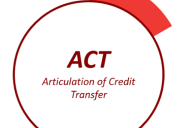You have /5 articles left.
Sign up for a free account or log in.
The number of students taking advantage of dual-enrollment options continues to grow across the nation. And why not? Taking college courses while enrolled in high school can save money and time when pursuing a bachelor’s degree. Here in Minnesota, 26 percent of all students enrolled in community colleges are still in high school.
Taking college courses while completing their high school diplomas gives students a head start on their college plans and often leads to higher graduation rates across all demographics. And yet, there are five common challenges these students face that can limit the effectiveness of this academic pursuit.
5 Challenges Students Face
First, students need personal advising before and after high school graduation. While in high school, students are carefully advised to ensure courses meet graduation requirements. However, once they graduate and continue at a community college, advising becomes optional. Advisers can keep students on track and provide academic support if they struggle. Students need to be encouraged to continue meeting with advisers to ensure they are taking the correct courses for majors and undergraduate degree requirements.
Second, students must understand college grades will follow them. Transcripts will be required for every academic program application in the future. While their GPAs are refreshed at each new institution, the individual grades for courses stay on their record. Receiving a C in a biology course may meet the high school requirement, but down the road it could prevent them from being accepted in the premed program at a university. Students need to be prepared to do their best and strive for a strong grade for each course.
Third, students must have realistic expectations of how courses and credits will transfer. Transferring courses from a two-year college to a four-year university can be challenging. General education courses transfer well, such as an American history course or Introduction to Sociology. But coursework for a major is more complicated. If students are considering a four-year institution in the future, they should contact the transfer specialists to find out exactly what courses they could take that would transfer into their desired program. Transfer specialists also know the required grades and if there are any limits on the number of credits that can be transferred.
Fourth, high school students taking college coursework require two types of information as they explore bachelor’s degree programs. They need to know how courses will transfer, what would be left to complete for the degree and details about potential majors. If they apply to universities right out of high school, they are considered first-year students, which determines the required application process, eligibility for specific scholarships and recommended orientation procedures. Too often, these students miss out on key information. Admission offices should customize the communications for these students so they have answers to all their questions and can make an informed decision about their next academic institution.
Finally, students should explore potential majors by engaging faculty in conversation at the two-year and four-year institutions sooner than later. The more college coursework a student completes, the quicker they will need to decide their major. Faculty can be an excellent resource. Not only can they discuss the subject matter, but they can explain research, internship and career opportunities. Students can refine their areas of interest and discover different concentrations or tracks in each program. Conversations with faculty at the four-year institutions can help students find the right fit for them and connect them to the department or degree program sooner.
It Takes a Team
To better support dual-enrolled students and to help them maximize their education, multiple two-year and four-year departments need to be involved. High school counselors, dual-enrollment coordinators, college advisers, department faculty and transfer specialists all have a supporting role to play. Key advice for students can be shared in a one-on-one conversation as well as in a formal presentation. One cannot assume students have this crucial information as they move forward with their education plan. Sharing these insights broadly will equip more students to feel confident in their academic pursuit and take full advantage of the dual-enrollment option.


